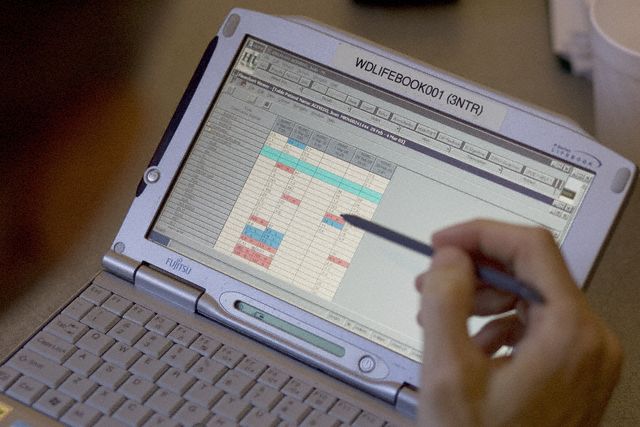|
From the Editor
This is the SUMMER 2006 issue of NI News - the quarterly free ezine from the site Nursing Informatics.com.
This publication offers articles, news, product and systems analyses, tech resources and dialogue on global nursing informatics issues, discoveries and theory. We will provide a comprehensive view of informatics in practice, education, research and administration.
If you would like to receive a regular copy, please go HERE to subscribe.
June Kaminski
Read the OJNI -
The Online Journal of
Nursing Informatics
Go to OJNI
As Editor in Charge of Virtual Nursing Practice and Culture, I invite you to submit your research and other papers related to using the online environment as a nursing context for OJNI publication.
 Canadian? Canadian?
Join the CNIA!
As President-Elect, I also invite you to join the Canadian Nursing Informatics Association at cnia.ca
 Canadian Journal of Nursing Informatics Canadian Journal of Nursing Informatics
Volume 1 No 2 published September, 2006.
An active call for papers, essays, reviews, columns, or other creative or practical work related to the world of nursing informatics is out - why not contribute?

OFFICIAL CALL
|
|
The Integration of
Nursing Informatics
in a BSN Program
|
The educator created an integrated thread of learning activities for the purpose of teaching nursing informatics concepts and theories and developing literacy in a variety of computer applications to four year BSN students in Western Canada. Prior to this, an individual course called Computers in Nursing was taught to students. This course was available to all students within the diploma program at Kwantlen College. When Kwantlen moved to University College status, a Bachelors of Nursing program was initiated. It was decided that nursing informatics would be integrated into each course of the new degree program rather than isolated in one separate course.
Nursing Informatics is integrated as a central thread within the nursing program in all eight semesters of the degree program.
Learning activities which include:
- a cognitive epistemological
- an interactive,
ontological and
- a reflective, phenomenological component
have been written for each course in the nursing program. The assumption is that as students use computers to manage information in their student role, they will more readily use their critical thinking skills to learn related applications in their work as nurses.
Dynamics of Distribution
From 1996 to early 1999, all of these learning activities were distributed in a paper manual form, and integrated into the regular curricular schedule by faculty teaching various program courses. In the fall of 1999, a web-based program of study was introduced in addition to the paper manual approach,
|
 to encourage self-directed study for students to access lessons both within the classroom and on personal computers on campus, in libraries, or at home. Embedded tutorials, hyperlinks, and interactive activities have been provided to enrich the learning experience and reinforce mastery of various computer applications as well as Nursing Informatics theory. In 2004, the paper manual approach was abandoned due to cost, meaning all activities are currently accessed in digital or on-line formats.
to encourage self-directed study for students to access lessons both within the classroom and on personal computers on campus, in libraries, or at home. Embedded tutorials, hyperlinks, and interactive activities have been provided to enrich the learning experience and reinforce mastery of various computer applications as well as Nursing Informatics theory. In 2004, the paper manual approach was abandoned due to cost, meaning all activities are currently accessed in digital or on-line formats.
Investigation into the Process
Qualitative data (1998, 1999, 2004) has been collected to glean insight into the students' and faculty's experiences with both modes of instruction (paper and web-based). Quantitative data (1996 to 2004) has also been collected to test for cyberphobia using the © P.A.T.C.H. scale and beginning levels of computer literacy, and to assist students to create an individualized plan for learning necessary computer and internet skills, and Informatics theory. An interesting though not unexpected trend noted by the author is that cyberphobia rates have diminished significantly over time. Students tested in 1996 showed higher rates of cyberphobia than current students do. This is understandable since new students often belong to the Generationa X or Millennial age cohorts, meaning they have grown up with higher computer exposure and experience.
Read More....
Go to News on page 2 |
The full article is available online at:
http://cnia.ca/journal/volume1_no2h.html
|
|